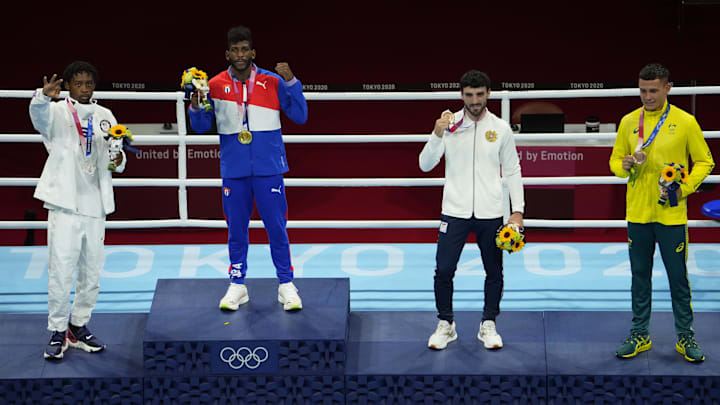The 2024 Summer Olympics are set to begin soon, and one of the sports that will be showcased will be boxing. The sport's best amateurs from all around the world will get to test themselves on the grandest stage of them all, en route to becoming professionals.
The boxing showcase at the Olympics has produced some of the best talent to ever step into the ring. For example, Muhammad Ali (fka Cassius Clay) won light heavyweight gold at the 1960 Olympics in Rome, Italy.
Eddie Eagan won gold at the 1920 Games, George Foreman won the heavyweight gold at 1968 Mexico City Games. The 1976 Games saw future world boxing champions Ray Leonard, Michael Spinks, and Leon Spinks also claim gold.
The boxing section of the Olympics has seen some great names step into the ring, and some of the best moments to ever take place in the Games' history were directly influenced by the boxing events. An example of this would be Ali lighting the symbolic torch in 1996, which was the first time former champion showed the world that he had been diagnosed with Parkinson's disease.
Boxing made its debut at the Olympics in 1904. It has been a consistent staple at ever Summer Olympics event since then, with the exception of the 1912 Games in Stockholm as Swedish laws banned the sport at the time.
Women's boxing was first introduced to the Summer Olympics in 2012 at the London games. There will be a total of 13 weight classes across both female and male divisions at the 2024 Summer Olympics. Eight for the male division and five for the female division.
For males, there will be 51kg, 57kg, 63.5kg, 71kg, 80kg, 92kg, and +92kg. The females will compete at 50kg, 54kg, 57kg, 60kg, 66kg, and 75kg.
The boxing events will take place at the Arena Paris Nord for the prelims phase. The final phase will take place at the Roland Garros Stadium.
A total of 248 competitors are expected to partake in the boxing events at the 2024 Summer Olympics. 13 boxing events are set to take place over a period of two weeks between Saturday, July 27 and Saturday, August 10.
Olympics boxing rules
Of course, the Olympics have a strict ruleset for boxing. All rules are standardized and kept the same throughout all bouts, with some differences visible in the male and female boxing events. Only amateur boxers are allowed to compete. This means that several rising stars in the world of boxing can be first seen here.
Between 1984 and 2012, male boxers were required to wear protective headgear. This rule was abandoned for the 2016 Summer Olympics, which took place in Rio de Janeiro, Brazil. Female boxers are still required to wear headgear though. For men, each bout is disputed over three rounds, with each running at three minutes. For women, there are four two-minute rounds.
At the end of each round, each judge determines a winner based on the judging criteria, with the victor being awarded 10 points for the round. The loser of the round can be awarded anywhere between seven to nine points, based on their performance. The scores are then tallied at the end to determine a final winner.
In each division, there will be four medals up for grabs. Namely, these will be gold, silver, and two bronze medals. The round of 32 prelims begins on July 27, with the round of 16 prelims getting fully underway on July 29. The quarter-finals begin on July 31. The boxing semi-finals begin on August 3. Whilst some of the finals will commence earlier, August 9 and August 10 will be solely dedicated to finals.
